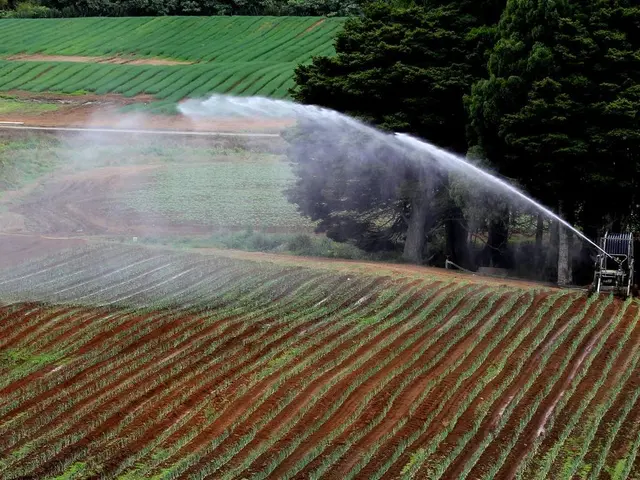Exploration of Eco-Friendly Energy Options in Agriculture
In the pursuit of a greener future, the agricultural sector is increasingly turning to renewable energy sources to power its machinery operations. A new study offers insights into the best energy solutions for various regions and machine sizes, as well as a decision-making process for implementing these changes.
Measuring the Lifecycle Carbon Footprint
The lifecycle carbon footprint of an energy source is calculated across its entire lifespan, including manufacture, transport, operation, maintenance, and end-of-life. This comprehensive approach ensures a holistic understanding of each energy source's environmental impact.
Solar Energy and Wind Turbines: Best Applications
The study highlights that solar panels are ideal for regions with high solar irradiance, such as parts of Africa, Australia, and Southern Europe. On the other hand, wind turbines are more suitable for areas with consistent and strong wind patterns, like coastal and open plain regions in northern Europe, North America, and parts of Asia.
Decision-Making Process
Adopting renewable energy involves a thoughtful decision-making process. This includes recording current energy use, obtaining quotes, estimating operational savings, applying incentives, computing payback, calculating lifecycle carbon dioxide and annual carbon savings, running sensitivity checks, and choosing the option with an acceptable payback and strong carbon savings.
Other Energy Options and Their Limitations
Biomass and biogas are local fuel sources for heat or gas/digestate, but they are limited by feedstock handling and emissions. Diesel generators have an approximate lifecycle carbon footprint of 0.7-1.0 kg CO2e per kWh, making them less environmentally friendly.
Micro-hydro is effective for greenhouse heating and can provide reliable base load if flow is year-round. Geothermal is also effective for greenhouse heating, with low winter fuel use, but it has a higher upfront cost.
Energy Efficiency Checklist
An energy-efficiency checklist includes sealing and insulating greenhouses and cold rooms, replacing old motors with high-efficiency models, right-sizing pumps and fans, adding controls, installing meters to monitor solar, battery, and fuel use, using waste heat from engines or digesters, training staff on routine checks, keeping a maintenance log and spare parts kit, and reviewing performance seasonally and adjusting.
Matching Energy Type to Machine Size
To size solar and battery banks, one should list every pump, light, fan, and fridge with hours/day, convert watts to watt-hours and add losses, size the solar array using local sun hours, and size the battery bank for desired autonomy.
Comparative Summary of Energy Types
The comparative summary of energy types for agricultural machinery operations is as follows:
- Solar energy (installed) has an approximate lifecycle carbon footprint of 0.04-0.08 kg CO2e per kWh.
- Wind energy for agricultural machinery operations has a similar carbon footprint.
- Biodiesel has an approximate lifecycle carbon footprint of 0.2-0.6 kg CO2e per kWh.
- Grid energy (mixed) has an approximate lifecycle carbon footprint of 0.3-0.6 kg CO2e per kWh.
Common Incentive Sources
Common incentive sources for adopting renewable energy include federal tax credits/grants, state/provincial rebates, utility net-metering and TOU rates, agricultural program grants, and low-interest renewable loans.
Cost-Benefit and Payback Analysis
A thorough cost-benefit and payback analysis is crucial when deciding to invest in renewable energy solutions. The best use for each energy type in agricultural machinery operations should be carefully considered based on the specific needs and resources of each farm or agricultural business.
In conclusion, the shift towards sustainable energy solutions for agricultural machinery operations is not only environmentally beneficial but also financially viable with the right planning and decision-making process. By adopting these practices, the agricultural sector can contribute significantly to the global efforts towards a greener future.
Read also:
- Achieving Successful Bonsai Grafting: Selecting the Appropriate Scion and Rootstock for Harmony
- European consumers are on the brink of experiencing a significant leap forward in electric vehicle (EV) charging technology, as Chinese automaker BYD prepares to unveil its innovative advancements.
- Recycling Business Transforms Steel and Aluminum Scrap into Reusable Materials
- The quest for renewable energy sources leaves us questioning the consequences on our oceanic ecosystems.








